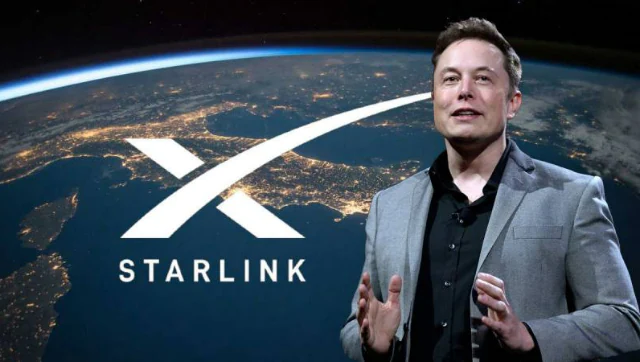Owning a car used to be simple – you put up a down payment and financing a portion of the vehicle or the entire amount to buy the car. Once you purchased the car, you paid for the fuel, the annual insurance premiums, and at regular intervals, paid to get your vehicle serviced. You owned your car. But will that continue to be the case in the future?

If the automobile industry has its way, they don’t want you to own your car, not entirely, at least. Car makers want you to pay more for the vehicle you “own” and keep on paying till you have the car in your possession. And how do they go about doing it? By charging you for features that your vehicle already has.
A scary scenario
Imagine this – you are out for a drive in your brand-new car after a hard week at the office. The vehicle you’re driving is the top-of-the-line version, with all the bells and whistles the car company provides. You love going and are having a good time. You try to tune the infotainment system to your favorite podcast, but you get a popup saying you need to pay a small fee to change what the infotainment system is playing for you. You ignore the message and try to adjust the climate control. You again get a popup saying that you need to buy a subscription to change the temperature of your car’s air conditioner. Want to switch on your ventilated seats? There’s that popup notification again.
Irritated by all this, you keep driving until you find an empty stretch of road, and you think that you would love to try out the super-fast acceleration of your new car that your sales advisor kept harping about. You press the pedal to the floor, expecting the car to take off like a stabbed rabbit, but instead, you see your vehicle roll off as it usually does. A popup message again says that to experience the super quick acceleration your car can, you need to subscribe to a hyper-performance pack from your dealer or your car manufacturer.
All of the things we asked you to imagine are happening in real life today as you’re reading this piece. Welcome to the dystopian world of hardware and features being provided as services.
The insidious trap
Most car manufacturers have shareholders to whom they are answerable. And more than anything, shareholders want continued and explosive growth and a sustained source of revenue. So how do car manufacturers ensure that their shareholders are happy? By creating a system that allows them to charge their customers more than what they pay for their cars in the form of a recurring fee.
One way to do this is to ensure that users service their cars at authorized service stations, where the markups are ridiculous. However, implementing that has proven to be a nightmare. Enter subscription pricing or Hardware/Feature as a Service.
Automakers have made it clear that they view “Software as a Service,” as it is called in business terminology, as a substantial revenue stream that will help them recoup some of the billions of dollars they have invested in research and development vehicles. Stellaris, the parent company of Jeep, Dodge, and Chrysler in the US, once stated that it anticipates making $22.5 billion annually from software and subscription revenues alone. Ford, Volkswagen, Daimler, BMW, and General Motors have all made comparable predictions.
What are car manufacturers doing
Car manufacturers like BMW, Mercedes, and Tesla have already implemented a paywall model that charges a fee for the features their cars are capable of. For example, BMW has features like heated seats and steering locked behind a paywall in several European and North American countries. Similarly, some of Tesla’s advanced features, like higher levels of ADAS or “autopilot” driving, are locked behind a paywall.
However, one of the most insidious examples of this would be Mercedes and what they have done with their EVs in North America. One of the hallmarks of an EV is the fast and instantaneous acceleration that its drivetrain provides. However, Mercedes has locked “increased” acceleration and other performance features behind a paywall that costs $1200 annually.
The point of buying an EV or any car from Mercedes or any other premium brand like that instead of a Ford or Jeep is the performance and speed that comes with it. What Mercedes has done here is locked the essence of their car behind an annual paywall. Think of it this way – as a Mercedes customer in North America, you are not paying for more or better acceleration. Unless you pay an annual ransom, you are being robbed of the regular acceleration that your expensive, brand-spanking-new Mercedes EV is capable of.
And mind you, Mercedes isn’t the only one doing this; other EV makers, including Tesla, have similar practices when it comes to acceleration and performance.
For years Tesla sold the Model S and Model X with the same 75 kWh battery but had the drivetrain locked by software to 60 and 70 kWh. The customer had the option to pay a one-time fee of an additional $3,000 for the extra 30 or 40 miles of range or pay an annual fee to have the content unlocked.
What car manufacturers plan to do
Automobile manufacturers, at least in Europe, North America, and certain Asian countries, hope that in the future, they will have as few variants of a model as possible – if possible, then only one single variant. This one variant will have the hardware that is needed for all of the top-of-the-line features that they have to offer. This will allow car manufacturers not only to save cost in production and warehousing by streamlining manufacturing and having to make fewer SKUs or stock-keeping units but also to charge more from customers – base variants have tiny profit margins for car makers, so the idea is to eliminate base variants.
The car you buy will have the hardware to support all the features you want. You pay an annual fee if you’re going to have a particular feature. You don’t need to pay the price if you don’t want the part while purchasing the car. However, if you activate the feature a few months later, you will need to pay a significantly higher fee annually.
And yes, the packages are most likely to be charged annually. In certain use cases, subscriptions may be offered monthly, but they will be much more expensive proportionally. We have already seen a similar pricing principle being adopted for other subscription services.
Users don’t own the car. They own
This brings us back to our original question. In the not-so-distant future, will you own the car that you possess, whose EMIs and insurance premiums you pay? Not likely. This becomes even worse when you consider how quickly we are moving towards a world full of EVs and where the internal combustion engine goes the way of the dinosaur. EVs will rely exceptionally on software, even for the most basic of functionalities, all of which can be killed with the stroke of a key made remotely.
Think of it this way- do you own something if you need to pay an annual or even a monthly fee to use it to its fullest potential, or are you, at that point, simply renting it?









